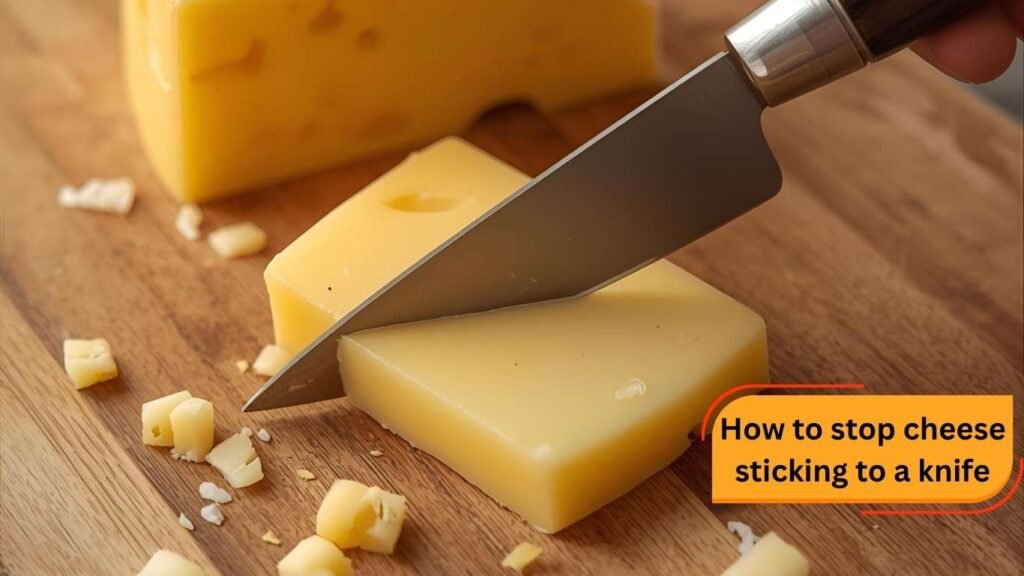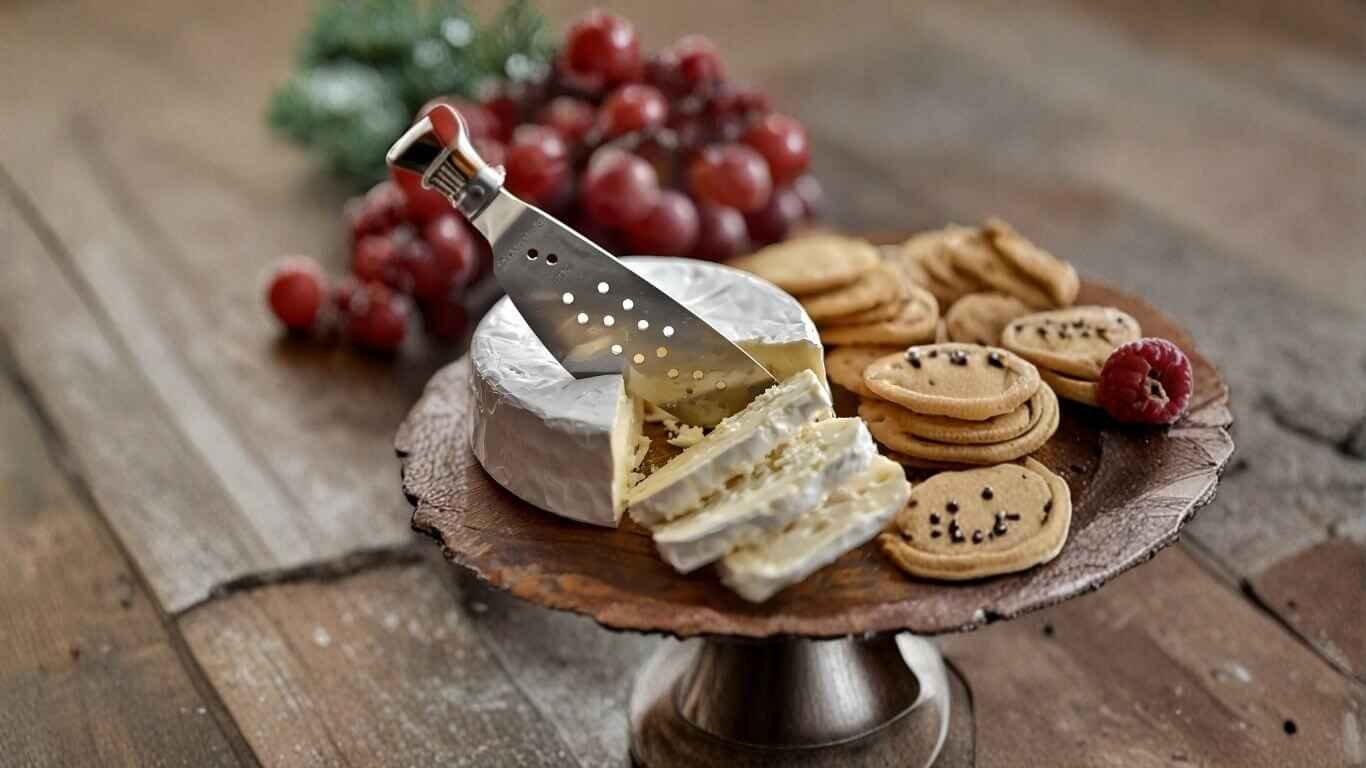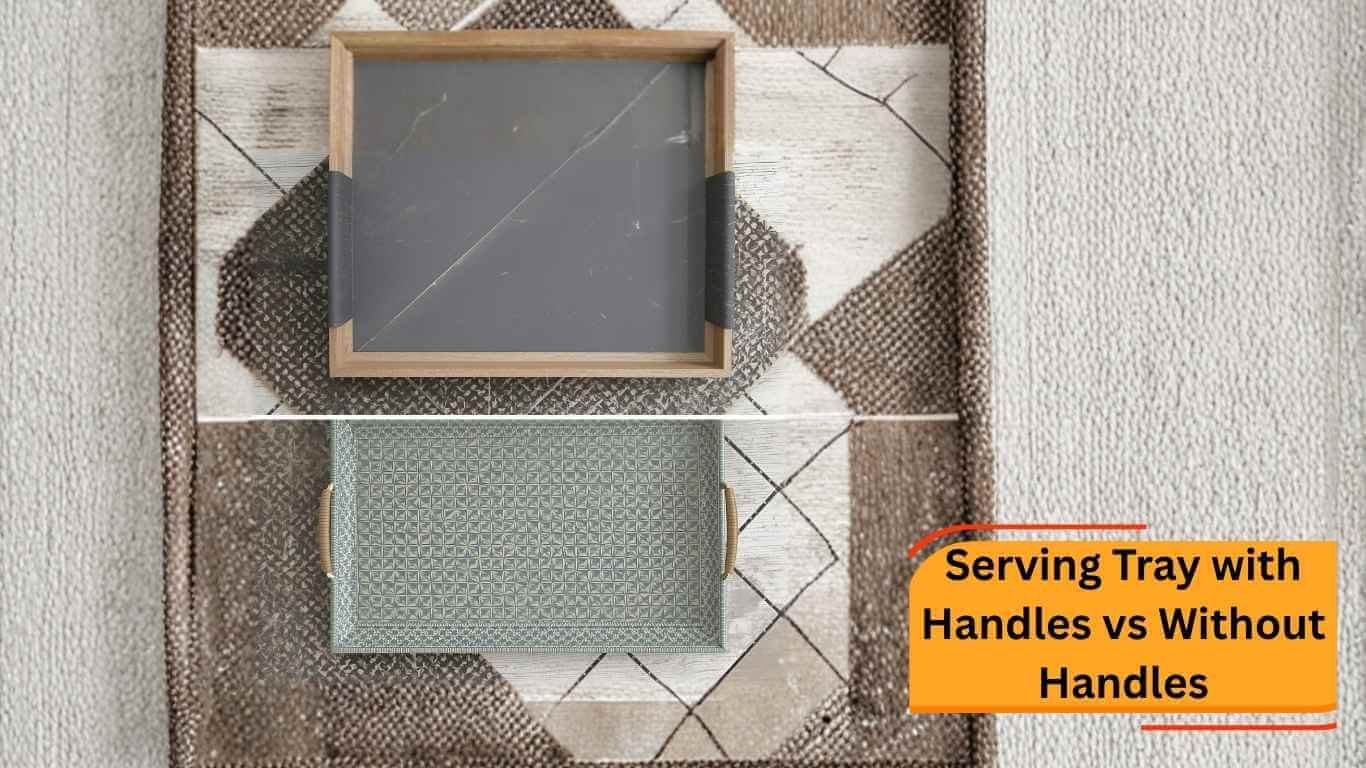There are few culinary pleasures as simple and satisfying as cutting into a perfect cheese block. Despite its simplicity, this simple act can quickly turn into a frustrating, messy experience. You reach for your knife, aim for a clean slice of Brie or a sharp wedge of Cheddar, and your blade ends up caked in a sticky, uneven smear. You are not the only person who has wondered how to prevent cheese from sticking to a knife. Whether you’re a home cook or an aspiring cheese expert, you’ve likely encountered this problem. The good news is that the solution isn’t complicated; it’s a science and technique.
It is caused by surface tension, moisture content, and proteins in the cheese that create the frustrating stickiness. Don’t worry, you don’t need a degree in physics to achieve the perfect cut. You will learn seven proven methods in this guide, from simple kitchen hacks to selecting the right tools. Our expert cheese cutting techniques and practical solutions will help you prevent cheese from sticking to your knife for good, ensuring every slice is clean, effortless, and ready for your cheese board.
Why Does Cheese Stick to Knives? The Science Behind the Problem
Before diving into the solutions, it helps to understand why your knife becomes a cheese magnet in the first place. The issue boils down to a few key scientific principles.
Surface Tension and Moisture Content
The primary culprit behind a sticky blade is surface tension, combined with the cheese’s high water content. Many cheeses, especially soft varieties like mozzarella and Brie, can be over 50% water. This moisture interacts with the natural proteins in the cheese, primarily casein. Casein is a natural adhesive (it’s even used to make some glues!), and when you press a knife blade into the cheese, the moisture and proteins work together to create a strong bond with the flat surface of the metal. This adhesion is what causes the cheese to cling stubbornly to the blade instead of falling away cleanly.
Blade Geometry and Contact Area
The design of your knife plays a significant role. A standard kitchen knife with a wide, flat blade presents a large surface area for the cheese to stick to. The more contact area between the metal and the cheese, the stronger the adhesive force becomes. This is why traditional chef’s knives often struggle with sticky foods. The smooth, uninterrupted surface provides the perfect canvas for the cheese’s moisture and proteins to grab onto, leading to ragged cuts and a messy blade. Understanding this helps explain why specialized cheese knives often look so unusual.
7 Proven Methods to Prevent Cheese from Sticking to Your Knife
Now for the solutions. These seven methods range from quick tricks using household items to long-term strategies involving the right tools and techniques.
Method 1: Use the Butter Technique
This classic trick is a favorite among cheese lovers for its simplicity and effectiveness. By creating a non-stick barrier, you can achieve surprisingly clean cuts.
- Step-by-Step Process: Simply take a stick of cold butter and gently slide your knife blade along it, creating a thin, even coating on both sides.
- Why It Works: Butter is a fat, which is hydrophobic (it repels water). This thin layer of fat prevents the moisture and casein proteins in the cheese from making direct contact with the metal blade, allowing the knife to glide through with minimal resistance.
- Best For: Soft and semi-soft cheeses like Brie, Camembert, and Havarti.
- Pro Tip: For a large block of cheese, you may need to reapply the butter every few cuts to maintain the non-stick coating.
Method 2: Warm Water Blade Treatment
Leveraging temperature is another highly effective and easy method. A warm blade can make a world of difference, especially with semi-hard cheeses.
- Process: Run the blade of your knife under hot running water for about 10-15 seconds, or dip it into a tall glass of hot water. Carefully wipe the blade dry with a clean towel before cutting.
- Temperature Recommendations: The water should be hot, but not boiling.
- Effectiveness: This method works by slightly melting the fats in the cheese at the point of contact. This creates a thin, lubricated layer for the blade to pass through smoothly. It’s excellent for cheeses like Cheddar and Gouda.
- Proper Drying Technique: Always dry the blade completely. Leaving water on the knife can introduce unwanted moisture into your cheese and affect its texture and shelf life.
Method 3: The Parchment Paper Hack
For those who prioritize presentation, the parchment paper hack is a game-changer. It creates a physical barrier between the cheese and the knife.
- Technique: Lay a sheet of parchment paper over the top of the cheese block. Press your knife down through the paper and the cheese to make the cut. Once the cut is complete, you can gently peel the paper away.
- How It Prevents Sticking: The knife never directly touches the sticky surface of the cheese. The parchment paper acts as a liner, ensuring a clean blade and an equally clean slice.
- Benefits: This method is fantastic for producing professional-looking slices for charcuterie boards and platters, as it completely eliminates smearing.
Method 4: Choose the Right Cheese Knife
Sometimes, the best solution is to use a tool designed specifically for the job. The best cheese knife to prevent sticking is one that minimizes surface area.
- Perforated/Hollow Blade Knives: You’ve likely seen a cheese knife with holes. These perforations, or hollow divots, reduce the surface area of the blade, giving the cheese less to cling to. Air pockets are created, breaking the suction.
- Serrated Edges: A serrated edge can be beneficial for cutting through cheeses with a hard rind and a soft interior, as the points of the serrations make initial contact with less friction.
- Thin Blades: Knives with very thin, sharp blades also reduce surface contact and can slice through firm cheeses cleanly.
- Wire Cutters: For extremely soft and sticky cheeses like fresh mozzarella or chèvre, a cheese wire is the ultimate tool. It has the absolute minimum surface area, ensuring a perfect cut every time.
Method 5: Temperature Control Techniques
The temperature of the cheese itself is a critical factor. A little preparation before you cut can save you a lot of hassle.
- Chilling Soft Cheeses: For very soft, sticky cheeses, place them in the refrigerator or even the freezer for 15-30 minutes before slicing. This will firm them up considerably, making them less prone to sticking and smearing.
- Room Temperature for Hard Cheeses: Conversely, hard cheeses like Parmesan or aged Gouda benefit from sitting at room temperature for about 20-30 minutes. This makes them less brittle and less likely to crumble or crack when you apply pressure.
Method 6: Proper Cutting Technique
How you cut is just as important as what you cut with. Using the right motion can dramatically improve your results.
- Slicing vs. Chopping: Instead of pressing straight down in a chopping motion, use a single, fluid slicing motion. Draw the knife from the heel to the tip through the cheese.
- Angle and Pressure: Apply firm, even pressure. Avoid wiggling the knife back and forth, as this will only increase smearing.
- Speed: A confident, steady speed is better than a slow, hesitant one. This helps the cheese release from the blade more effectively.
Method 7: Oil the Blade Method
Similar to the butter technique cheese cutting method, oil creates a lubricant that prevents sticking.
- Light Coating: Apply a very light coat of a neutral-flavored oil (like canola or grapeseed oil) to the blade with a paper towel.
- Application: Ensure the coating is thin and even on both sides of the blade.
- When It Works Best: This is a great all-purpose method that works well on most cheese types, from semi-soft to hard. Be sure to use a neutral oil to avoid imparting any unwanted flavor to your cheese.
Best Cheese Knives for Different Types of Cheese
Choosing the right knife is half the battle. Here’s a breakdown of the best tools for the job based on cheese type.
Soft Cheese Knives (Brie, Camembert, Goat Cheese)
For these creamy, often sticky varieties, you need a knife that minimizes surface contact.
- Perforated Blades: The classic soft cheese knife has holes or ridges to prevent sticking.
- Wire Cutting Tools: A cheese wire or lyre is the professional’s choice for perfect, clean cuts on the softest cheeses.
- Pronged Tips: Many soft cheese knives feature a forked tip, which is perfect for picking up and serving the slice after cutting.
Hard Cheese Knives (Cheddar, Parmesan, Gouda)
Hard cheeses require a sturdy, powerful blade.
- Sturdy, Wide Blades: A cheese spade or cleaver is designed for breaking off chunks of very hard, aged cheeses like Parmesan.
- Cheese Cleavers: A small, hatchet-shaped knife that allows you to use force to cut through firm blocks of Cheddar or Swiss.
- Plane Slicers: For creating very thin, uniform slices from semi-hard cheeses like Gouda or Provolone.
Multi-Purpose Cheese Knives
If you only want one knife, look for a versatile option.
- Serrated Utility Knives: A knife with a serrated edge and a pronged tip can handle everything from hard rinds to soft interiors and can also be used for serving.
- The “Soft-Blade” Knife: This knife often has a long, perforated blade that works well on a wide range of semi-soft to semi-hard cheeses.
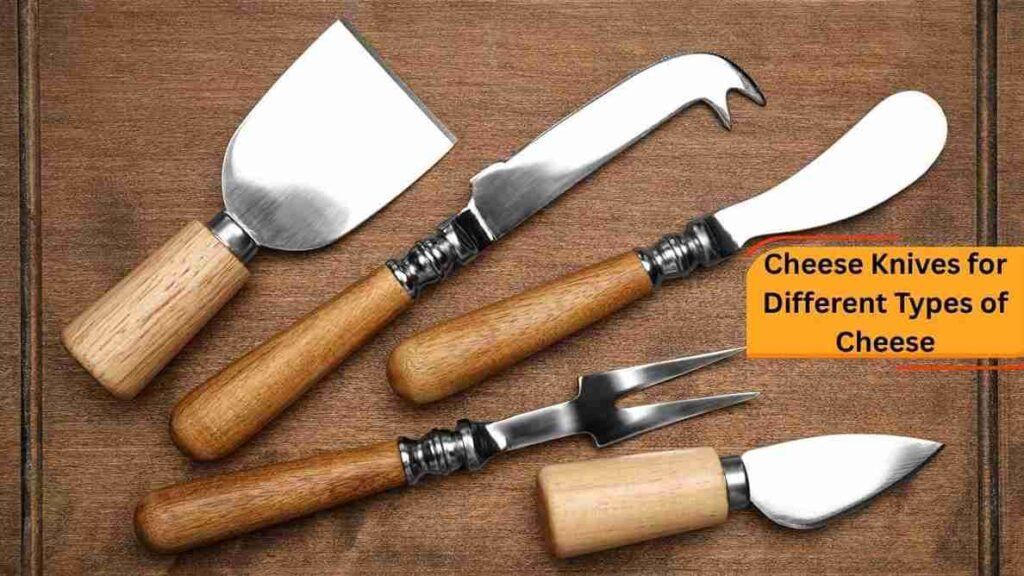
Common Cheese Cutting Mistakes to Avoid
Even with the right tools, a few common errors can lead to a messy outcome.
Using the Wrong Blade Type
The most frequent mistake is grabbing a standard, flat-bladed chef’s knife for a soft, sticky cheese. The large surface area is guaranteed to cause problems. Similarly, using a bulky cleaver on a delicate Brie will crush it rather than slice it.
Incorrect Temperature Preparation
As discussed, temperature is key. Trying to slice a rock-hard block of cheddar straight from the fridge will likely result in crumbling and an uneven cut. Conversely, letting a soft goat cheese get too warm and gooey before cutting will create an inseparable mess.
Poor Cleaning Between Cuts
If you are slicing multiple types of cheese for a platter, it is crucial to wipe your blade clean between each one. Failing to do so can cause sticky buildup, make subsequent cuts messier, and lead to cross-contamination of flavors.
Professional Tips from Cheese Experts
Cheesemongers and chefs have perfected the art of cutting cheese. Here are a few of their secrets.
Restaurant and Cheesemonger Techniques
Professionals almost always use cheese wires for cutting large wheels of soft and semi-soft cheese, as it guarantees a perfectly clean cut with no waste. For retail cuts, they use long, thin blades (often called curd knives) and master the single, fluid slicing motion. They understand that balancing speed and precision comes with practice.
Maintenance and Care
A sharp knife is a safe and effective knife. A dull blade requires more pressure, which can crush the cheese and increase sticking.
- Cleaning: Always wash your cheese knives by hand with warm, soapy water immediately after use. The dairy proteins can be corrosive to metal over time.
- Storage: Store knives in a block or on a magnetic strip to protect the blades.
- Sharpening: Sharpen your sturdy, hard cheese knives regularly. Thin, perforated blades may not require frequent sharpening.
Troubleshooting Specific Cheese Types
Some cheeses present unique challenges. Here’s how to handle them.
Extra Sticky Cheeses (Fresh Mozzarella, Ricotta)
For water-packed fresh mozzarella, a cheese wire is the undisputed champion. A very thin, serrated knife that has been run under hot water is a good alternative. For portioning ricotta, simply use a spoon dipped in hot water.
Crumbly Cheeses (Feta, Blue Cheese)
To prevent crumbly cheeses from falling apart, use a cheese wire or a very sharp, thin-bladed knife. Chilling the cheese beforehand can also help it hold together. For blue cheese, a knife with a narrow profile helps navigate around the pockets of mold without smearing them.
Waxed Cheeses
For cheeses encased in wax, like some Goudas and cheddars, use the tip of a sturdy knife to score the wax all the way around. You can then often peel it off in two clean halves. Cut the cheese itself after the wax has been removed.
Alternative Tools and Gadgets
If you’re a true cheese aficionado, you might want to explore tools beyond the basic knife.
- Cheese Wires and Lyres: As mentioned, these are the best tools for soft cheese, providing the cleanest cut possible.
- Non-stick Coated Slicers: Many modern cheese slicers and knives come with a non-stick coating, similar to what you’d find on a frying pan.
- Electric Cheese Cutters: For those who entertain frequently or work with large quantities of cheese, an electric cutter can provide fast, uniform slices.
- Specialized Graters and Planers: Tools like a rotary grater for Parmesan or a cheese plane for semi-hard cheeses are designed for specific tasks and perform them perfectly.
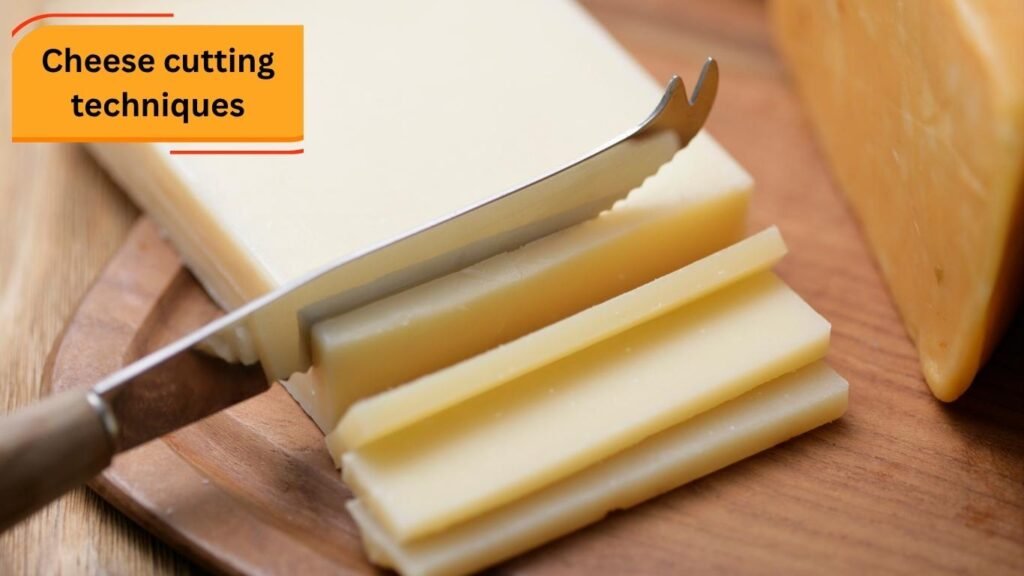
Frequently Asked Questions
Why do some cheese knives have holes?
The holes in a cheese knife serve one primary purpose: to reduce the surface area that comes into contact with the cheese. This creates air pockets, which breaks the suction and significantly reduces sticking, especially with soft, moist cheeses.
Can I use regular kitchen knives for cheese?
You can, but you may face limitations. A standard chef’s knife is often too wide and sticky for soft cheeses. A paring knife can work for harder cheeses, but it lacks the leverage for large blocks. While a regular knife is acceptable in a pinch, using the methods above (like the butter or warm water trick) will greatly improve your experience.
How often should I clean my knife while cutting?
For best results, you should wipe your knife clean with a damp cloth after every few cuts, especially when working with soft, sticky cheeses. You’ll know it’s time to clean when you feel resistance increasing or see a significant amount of cheese residue building up on the blade.
Conclusion
Sticking cheese to a knife is a universal frustration, but there are simple and effective solutions. If you understand why cheese sticks and apply the right techniques, you can achieve perfect, clean slices every time. The warm water blade treatment and using a specialized cheese knife with holes are two of the most effective methods for a quick and reliable fix. Fat, however, can produce surprisingly great results for sheer simplicity.
We encourage you to experiment with these different techniques to find out what works best for your favorite types of cheese. When you prepare and choose the right tool, cheese-cutting becomes a pleasure instead of a chore. When setting up a cheese board, try the butter technique next time. You might be surprised at how much difference it makes.
